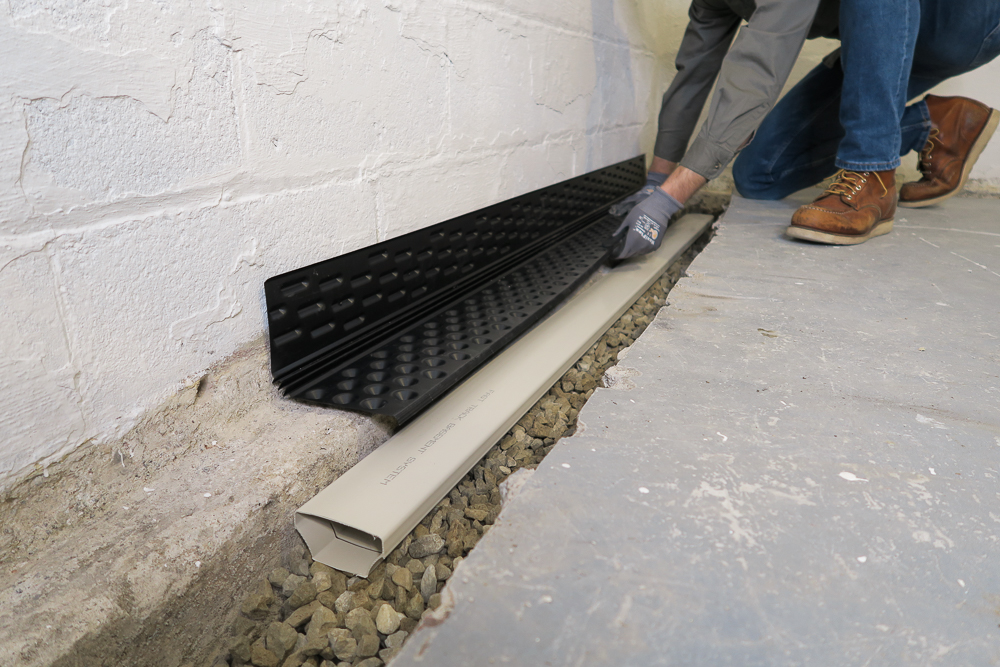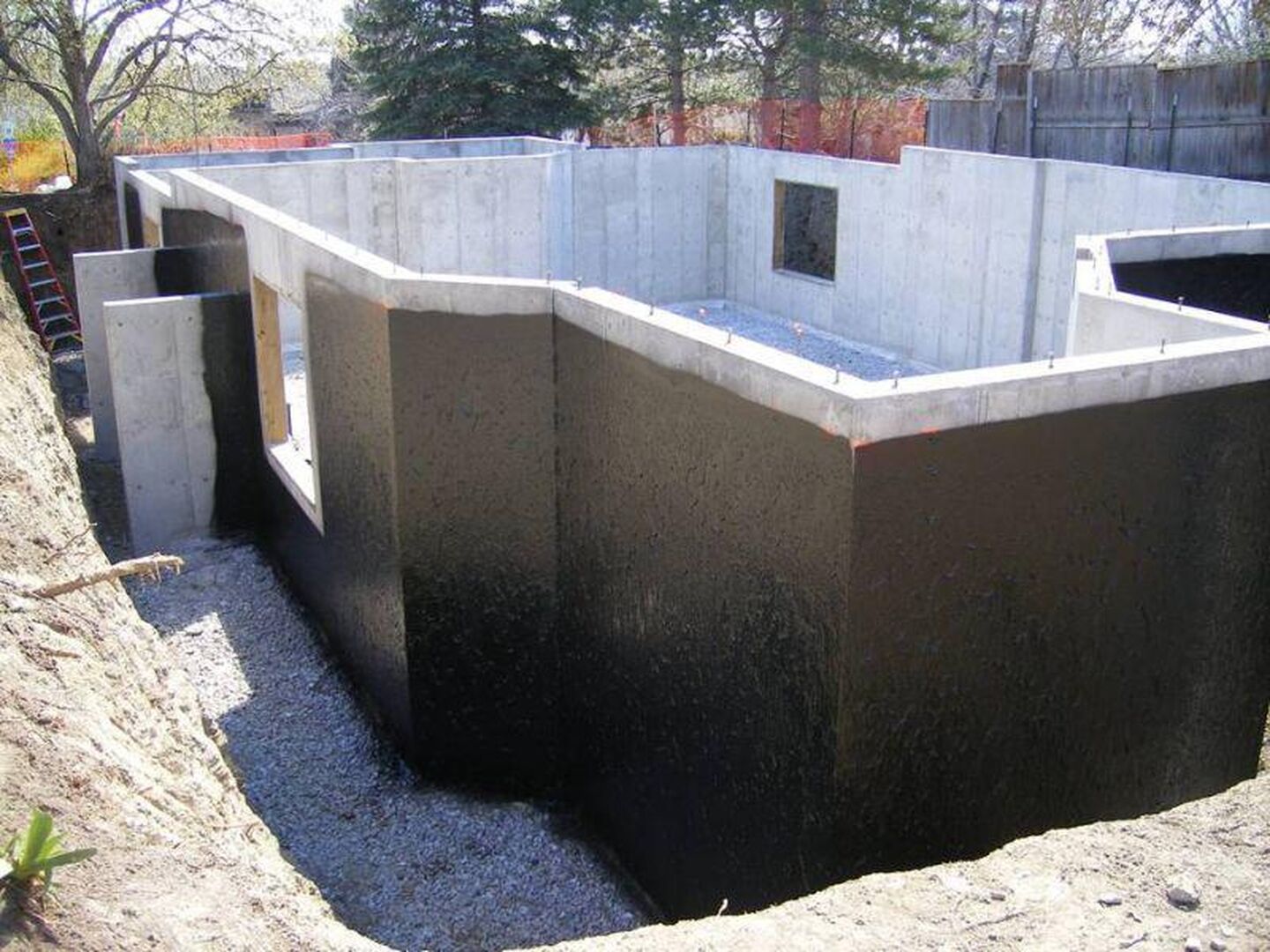Everything You Should Know About Sump Pump Installation And Replacement Before Rainy Season Hits
How Cellar Waterproofing Works: A Comprehensive Overview for Your Home
Basement waterproofing is vital for securing homes from water damage. Various methods exist to address dampness issues, each tailored to details reasons. Property owners should comprehend these options to select the very best option for their requirements - Water Solutions Omaha. The effectiveness of these techniques relies upon the best materials and strategies. What are the most usual techniques, and how can they be executed efficiently? This overview will certainly check out these critical aspects
Understanding the Reasons of Cellar Moisture
Although basements are typically created to be practical and dry rooms, they can succumb dampness due to numerous elements. One primary reason is bad drainage around the structure, which can bring about water pooling and seepage. Furthermore, heavy rains or rapid snowmelt can bewilder water drainage systems, worsening wetness problems. Another substantial factor is the natural humidity present in the ground, which can penetrate through wall surfaces and floorings, specifically in older homes with much less effective obstacles. Fractures in the foundation might likewise allow water invasion, particularly during periods of heavy precipitation. Additionally, plumbing leakages within the basement can add to moisture accumulation, developing an atmosphere for mold growth. Lastly, inadequate ventilation can trap moisture, aggravating the overall moisture trouble. Comprehending these causes is necessary for house owners seeking effective remedies to avoid basement wetness issues.
Sorts Of Basement Waterproofing Approaches
Basement waterproofing techniques are necessary for safeguarding homes from moisture damage and keeping a secure living setting. These techniques can be extensively categorized into exterior and interior options. Interior waterproofing generally involves the setup of drainage systems, sump pumps, and vapor obstacles. These systems function to divert water away from the basement and protect against moisture from permeating through the walls or floor.On the other hand, outside waterproofing concentrates on protecting against water from entering the home in the starting point. This can include excavation around the structure, using water-proof coatings, and installing drain ceramic tiles to reroute water away from the framework. In addition, some property owners may choose a combination of both outside and indoor methods to guarantee thorough protection. Eventually, the choice of waterproofing approach relies on the specific problems of the home and the degree of wetness present in the cellar.
Products Utilized in Waterproofing Solutions

Different products are utilized in waterproofing options to improve the effectiveness of both exterior and interior approaches. Commonly utilized products include fluid membrane layers, which produce a seamless obstacle versus dampness. These membrane layers are normally made from polyurethane or rubberized asphalt, using adaptability and durability. In addition, cementitious waterproofing products are prominent for their simplicity of application and strong bond to surfaces.For exterior applications, products such as water drainage boards and geotextiles work in redirecting water far from foundations. Squashed rock and gravel are likewise utilized in water drainage systems, promoting correct water flow and decreasing pressure buildup. In many cases, specialized finishings and sealers, like silicone or epoxy, are put on give additional defense against water seepage. Together, these materials play an essential function in ensuring that a cellar continues to be dry and shielded from water damage.
Steps to Water-proof Your Basement
Waterproofing a basement entails a systematic technique to effectively prevent water invasion and damages. The primary step is to check the outside of the home, checking for fractures or voids in the structure. These ought to be sealed with an appropriate water resistant sealer. Next, confirm that seamless gutters and downspouts are working appropriately and directing water away from the foundation.After attending to outside concerns, the inside should be evaluated. Setting up a water-proof membrane layer on cellar wall surfaces can provide additional protection. Water Solutions. It's also recommended to carry out a sump pump system to handle any kind of water accumulation.Finally, rating the landscape around the home can help guide water away from the foundation, additional minimizing the danger of water seepage. By complying with these steps carefully, house owners can produce a robust defense against basement flooding and moisture problems
Maintenance and Avoidance Tips for a Dry Cellar
Normal maintenance and positive procedures are crucial to making sure a dry basement long after initial waterproofing initiatives. Home owners must regularly examine gutters and downspouts, guaranteeing they straight water away from the structure. It is vital to maintain these clear of debris to stop overflow. In addition, preserving proper rating around the home assists channel water far from the structure.Checking for splits in walls or floors is essential, as these can permit dampness infiltration. Any kind of recognized fractures should be without delay sealed with appropriate products. Installing a sump pump can supply added defense against flooding.Humidity degrees in the cellar ought to additionally be kept track of, as high moisture can lead to mold development. Making use of a dehumidifier can assist keep a comfortable setting. Finally, making sure proper ventilation in the cellar aids in minimizing moisture accumulation, maintaining the integrity of the waterproofing system gradually.
Frequently Asked Concerns
Just How Lengthy Does Basement Waterproofing Commonly Last?
The longevity of basement waterproofing commonly differs based on materials and setup top quality. Generally, it can last from 5 to ten years, with some systems possibly sustaining longer if properly maintained and kept track of gradually.
Can I Water-proof My Cellar Myself?
The specific considered whether to water resistant their basement separately. While do it yourself alternatives exist, they need expertise of methods and materials. Expert services guarantee effective results, usually surpassing the potential threats and obstacles associated with self-installation.

What Are the Indications of Inadequate Waterproofing?
Indicators of poor waterproofing include consistent moisture, mold and mildew development, stuffy smells, peeling off paint, and water stains on floors or walls. Property owners ought to attend to these concerns without delay to avoid further damage and maintain a healthy living environment.

Does Basement Waterproofing Rise Home Value?
Basement waterproofing can improve a home's worth by avoiding water damages and improving livable space. Prospective customers frequently focus on completely dry basements, making waterproofing an important financial investment that adds to overall building appeal and marketability.
Exactly How Much Does Cellar Waterproofing Price generally?
The average expense of cellar waterproofing commonly ranges from $1,500 to $5,000, varying based on elements such as job dimension, approach made use of, and neighborhood market problems. Homeowners ought to obtain several quotes for precise quotes. Cellar waterproofing is necessary for shielding homes from water damages. Cellar waterproofing approaches are essential for protecting homes from moisture damages and keeping a secure living setting. These systems function to draw away water away from the cellar and stop Exterior Drainage Solutions wetness from penetrating through the walls or floor.On the other hand, outside waterproofing concentrates on protecting against water from getting in the home in the very first location. The durability of basement waterproofing frequently varies based on products and installment top quality. Basement waterproofing can enhance a home's value by protecting against water damages and enhancing habitable space.